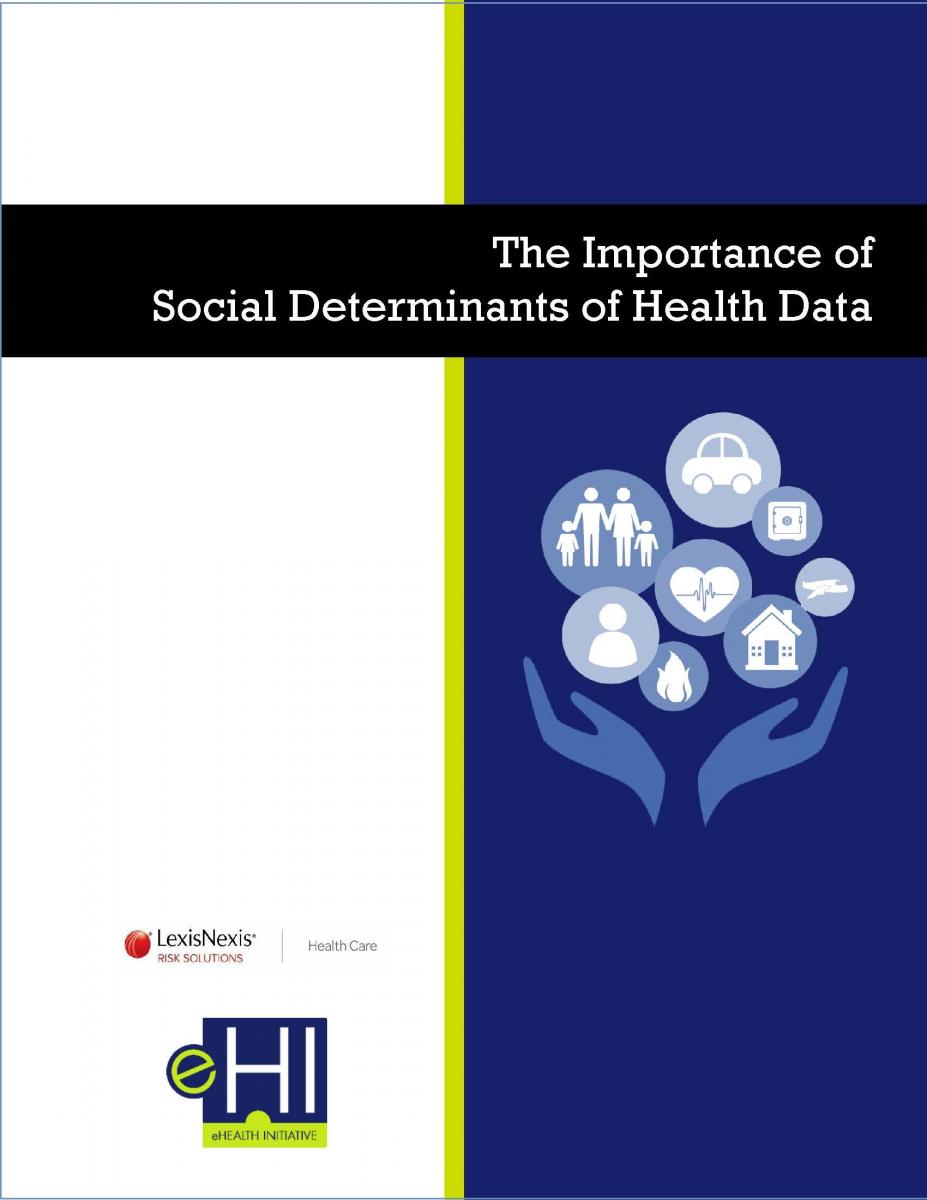The Importance of Social Determinants of Health Data
Improving the Patient Experience, Value-Based Care, Health Equity & Access
The Importance of Social Determinants of Health Data
 The Importance of Social Determinants of Health Data (SDOH) paper examines different industry approaches to addressing SDOH. The report demonstrates how SDOH data is critical to reducing cost and improving the quality of care provided by today’s healthcare system. In Winter 2018, eHealth Initiative Foundation and the LexisNexis® Risk Solutions healthcare business hosted the second in a series of roundtable meetings on data governance in healthcare. The roundtable focused on data governance from the perspective of Social Determinants of Health (SDOH), convening senior executives from across the healthcare spectrum. The goal of the meeting was to gather expert opinions on the use of SDOH data to benefit patients and providers. Medical care alone has a very limited effect on overall population health and could be significantly enhanced by pairing with approaches that address SDOH.[i] SDOH data is critical to reducing cost and improving the quality of care provided by hospitals and health systems.
The Importance of Social Determinants of Health Data (SDOH) paper examines different industry approaches to addressing SDOH. The report demonstrates how SDOH data is critical to reducing cost and improving the quality of care provided by today’s healthcare system. In Winter 2018, eHealth Initiative Foundation and the LexisNexis® Risk Solutions healthcare business hosted the second in a series of roundtable meetings on data governance in healthcare. The roundtable focused on data governance from the perspective of Social Determinants of Health (SDOH), convening senior executives from across the healthcare spectrum. The goal of the meeting was to gather expert opinions on the use of SDOH data to benefit patients and providers. Medical care alone has a very limited effect on overall population health and could be significantly enhanced by pairing with approaches that address SDOH.[i] SDOH data is critical to reducing cost and improving the quality of care provided by hospitals and health systems.
According to Healthy People, a U.S. Department of Health and Human Services (HHS) initiative providing science-based, 10-year national objectives for improving the health of all Americans, SDOH are conditions in the environments in which people are born, live, learn, work, play, worship, and age that affect a wide range of health, functioning, and quality-of-life outcomes and risks. Examples of social determinants include availability of resources to meet daily needs, such as safe housing and local food markets; access to educational, economic, and job opportunities; access to health care services; quality of education and job training; availability of community-based resources in support of community living; opportunities for recreational and leisure-time activities; transportation options; public safety; social support; social norms and attitudes, such as discrimination and racism; exposure to crime, violence, and social disorder; socioeconomic conditions, including concentrated poverty and the stressful conditions that accompany it; residential segregation; language and literacy; access to mass media and emerging technologies (e.g., cell phones, the Internet, and social media); and culture.[ii]



